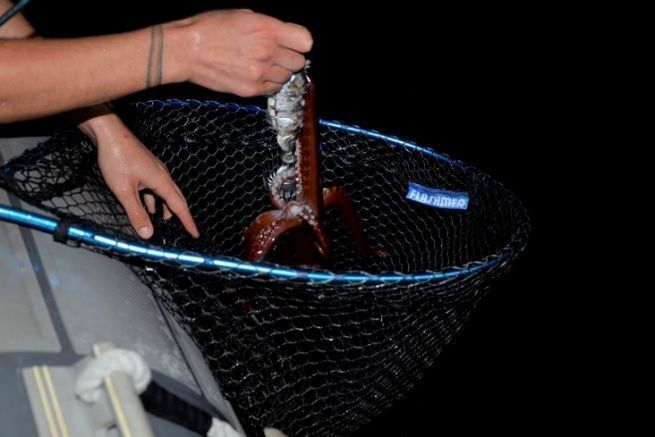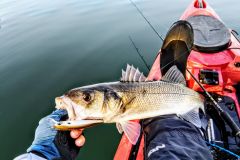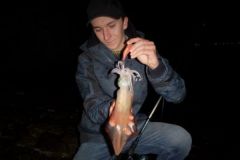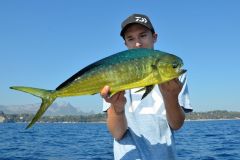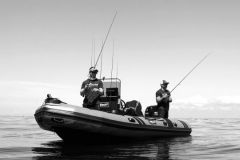The breaks
Just like in many fisheries, finding breaks when looking for red squid is paramount. The main difference is in the depth and extent of the break you need to look for.
These breaks can be identified on the marine maps quite easily. The steeper they are, the more they can concentrate a large quantity of squids. The rocky bottoms are obviously the most favorable, because they serve as a refuge for small fishes, favorite preys of red squids.
An ideal break starts around 100 meters deep, dives rapidly and reaches at least 200 meters over a short distance. It can reach up to 500 to 800 meters depending on the area.
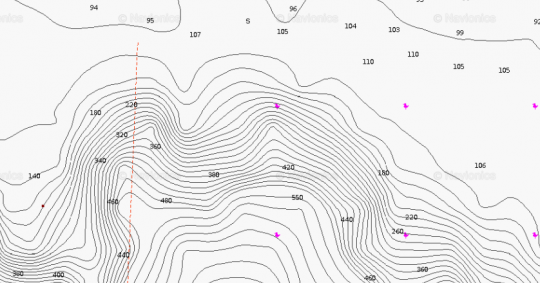
The current
Once you have identified a few breaks that you think are suitable for this fishing technique, you will have to select the right one.
Forage fish move with the underwater currents to expend the least amount of energy possible, followed by predatory fish and red squid. The organisms pushed by these currents are a reliable food source for the entire food chain.
When a deep current enters in front of a break, the water and everything in it is inevitably pushed to the surface. This is an advantage for us, since the comfort depths to fish are less than 200 meters. To bring down a line in 400 or 500 meters requires special equipment.
When the wind and the swell are in the same direction, even if both are of low intensity, the water is pushed in the same direction. It is therefore necessary to find a break exposed as much as possible to the waves.
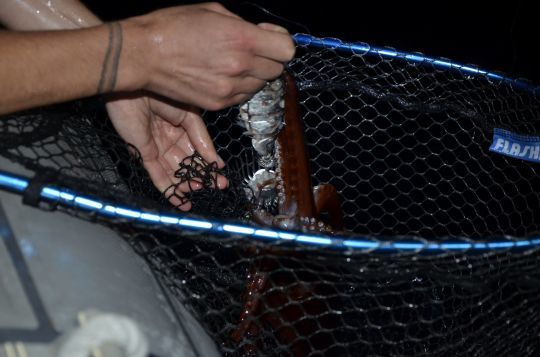
Finding the right depth
Even if the depth of the break we are looking for is about 100 meters minimum, the squids are not always near the bottom. Depending on the height at which the forage fish are found, the squid will move between the bottom and the surface.
We often find them around 50 meters under the boat when we fish anchored, the smell of our baits creates a kind of broume each time we go down our assembly. Some even go up to the surface if we stay a long time on the same zone.
It is necessary to prospect all the depths, with the aim of finding the bench and of being able to gain in effectiveness by knowing where to stop the assembly at the time of the descent to start the attack.

 /
/ 



